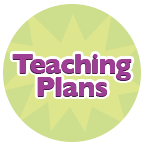INTRODUCTION TO THE UNIT
The Read Aloud, and two Shared Reading texts in this unit focus on stewardship of our environment, and students will be engaged in inquiring how they can take responsibility for looking after the natural world.
The Read Aloud text, Panda Kindergarten exposes the students to the work of the China Conservation and Research Centre for the Giant Panda. Staff in the Centre are trying to ensure that the giant panda does not become extinct, and students will have the opportunity to learn about taking responsibility for endangered animals.
One Shared Reading text, Somebody Cared for a Flower, demonstrates how a small action by one human being can make a difference and create a series of positive environmental actions. The other Shared Reading item is a media text, a poster advertising a ‘clean up litter in the schoolyard’ event. Both these pieces explore taking care of our local environment.
Opportunities for oral language activities and playful learning are woven throughout the unit as students discuss, dramatize taking care of pandas and creating a community garden, organize and run a schoolyard litter clean-up day, grow and take care of plants, and paint pictures of ways they would take care of the world. Contextual Working with Words lessons accompany each Shared Reading text and can be done with the class or with a small group of students with similar needs. A brief text-type writing study invites students to write about a positive action to take care of the world with an accompanying reason (Persuasive: Stating Reasons). The mentor text to support this writing project is the Clean Up Litter poster.
For details about the unit, see the Caring for the World Plan-at-a-Glance Chart
Inquiry Question
A critical thinking approach is stimulated when we have a key question to focus our thoughts. This inquiry question can cause us to ask new questions, seek possible answers, and problem-solve to see which solutions may work best. It draws us deeper into an issue and helps us to make connections. The inquiry question for this unit is “How do we care for the world?”Students explore the inquiry question by considering how we take care of animals, plants, and trees, and how we can keep our environment clean. Throughout the unit, students will focus on how actions by one person can make a positive difference in caring for the natural world, and they will also be exposed to the concept that working together can be extremely powerful. As the unit concludes, students will be able to respond to the inquiry question by providing positive suggestions for taking good care of our world.
ELL Note
This inquiry unit is extremely relevant to English Language Learners (ELLs) since many of them have lived in other countries and therefore already possess a sense of worldliness. Panda Kindergarten will particularly appeal to Asian students. Using a world map to locate China, Canada, your city or town, and other students’ countries of origin, is a fitting way to begin a unit whose theme is ‘caring for the world.’When reading Panda Kindergarten, show other picture books about animals, both endangered and not, that are native to the ELLs’ countries and engage the ELLs in a discussion. ELLs can also relate to photos showing children in different countries engaged in caring for plants and animals. This could lead to a discussion of how they took care of pets, plants, or the environment in their countries of origin.
You might also make use of the photos in Panda Kindergarten to practise numbers: counting pandas, numbers of ears, noses, etc.
ELLs might use Somebody Cared for a Flower and/or the Clean Up Litter poster to practise reading, to circle and underline words using, e.g., Wikki Stix, and to match words with pictures.
Enlist the help of parent volunteers or students who speaks the same language as the ELLs. They can partner with students and together they can discuss the book/ pictures in their own languages and work together on the activities. While listening to the words of Shared Reading texts on the Media Key or online, the ELLs’ partners can simultaneously point to the written words, establishing a sound/symbol correspondence.
Words from students’ first languages can be illustrated and labelled on sticky notes, added to the Working with Words display, and then be explained and pronounced by the ELLs.
You may choose to modify the assessment rubric by reducing the amount of expectations to be covered. The wording of the expectations can also be modified to read, “begins to respond appropriately to questions,” etc.
Students learn English by looking and listening, so include non-verbal activities in order to promote eye contact and a keen ear. Encourage ELLs to use puppets to assist them in dramatic play. These skits can be performed with a partner in their first language, sprinkled with some new English vocabulary.
MONITORING PROGRESS
You will have numerous opportunities to observe students as they inquire through talk, dramatization, movement, artwork, and play.
-
The Inquiry Assessment provides a checklist for you to observe and note student engagement with, and understanding of, the inquiry topic.
You will also wish to monitor other developmental areas. You may choose to use one or more of these assessment tools during the unit:
-
Use the Oral Language Assessment Scale to quickly observe and note oral language behaviours. Or, you may choose to use the Oral Language Development Checklist (see the K–3 Program and Planning Guide, pp. 81 – 83) for a more detailed monitoring of progress of children needing support in this area.
-
Use the Book Handling and Print Tracking Assessment (see the Kindergarten Reading Guide, p. 13) to check on early literacy concept development.
-
Use the Working with Words Checklists (see the Kindergarten Working with Words Guide, pp. 97–105) to record observed development in phonemic/phonological awareness, letter recognition, knowledge of high-frequency words, word solving and building skills, and the use of context (language predictability).
